會議議程
特邀主題演講- Opening Plenary Talk I
- Opening Plenary Talk II
- Keynote Speech I
- Keynote Speech II
- Keynote Speech III
- Keynote Speech IV
 |
演 講 者:詹婷怡 (Nicole T. I. Chan) 前主委/ 律師 / 產業顧問 數位經濟暨產業發展協會 副理事長 演講主題:Beyond 5G-後匯流時代的數位新格局 演講時間:2020年1月15日 13:30~14:10(7F義大演講廳) |
Abstract
本演講內容將以後匯流時代的產業會社會發展為主軸, 談全球商機、創新技術之有效應用、 營運模式創新、信任網路環境、 及Digital Transformation以及未來發展趨勢。
Biography
詹婷怡副理事長自1992年從事律師工作起,即致力於智慧財產權法、網路法律、科技法律及數位匯流法律與產業政策分析領域,並參與台灣電信自由化與數位匯流發展進程。在2008年至2010年擔任經濟部南港軟體育成中心主任與文建會文創產業專案辦公室主任期間,帶領新創產業團隊爭取資金,並負責規劃我國文創產業發展藍圖,包括法規、投融資機制、文創院等配套;在2013年至2016年擔任資訊工業策進會科技法律研究所所長期間,擔任多項政府前瞻科技相關政策法制計畫主持人,帶領科法所成為政府科技法律重要智庫,並促成vTaiwan線上法規討論平台的建立。並於2015年八月一日起擔任國家通訊傳播委員會主任委員,主導我國後匯流時代發展藍圖、推動電信管理法與數位通訊傳播法及相關法規、5G與物聯網政策制定、影視平台及上下游產業生態系統建構、網路治理與資安政策推動等,2019年四月回到產業擔任企業之產業發展與策略顧問。
詹婷怡也曾投入電影產業影視製作,參與多部電影製作與資金籌措管理,包括《父後七日》、《龍飛鳳舞》、《進擊之路》、《賽德克.巴萊》及《阿莉芙》等。
她擁有國立政治大學EMBA學位、英國倫敦大學智慧財產法學碩士及國立台灣大學法學士學位。
Nicole T. I. Chan, an attorney at law and industrial consultant, Board director of Industrial Technology Research Institute, Vice Chair of Digital Transformation Association, as well as many distinguished positions in the areas of law and technology.
She is a frequent panelist and moderator and conferences around the world. Previous roles have included Chairperson of National Communications Commission, Adjunct Professor at School of Law of National Chiao Tung University, and filmmaker.
Nicole is a graduate of London School of Economics and National Taiwan University, qualified as a lawyer in Taiwan. Her areas of expertise include Intellectual Property Law, Telecommunication Regulations and Policy, Internet Jurisdiction and Policy, Internet Governance, Cybersecurity Governance…, etc.
現 職
律師/產業顧問
數位經濟暨產業發展協會 副理事長
台灣區電機電子工業同業工會 會策顧問
交通大學科技法律學院科技法律研究所 兼任教授級專家
財團法人工業技術研究院第14屆董事
經 歷
國家通訊傳播委員會 主任委員
資訊工業策進會 科技法律研究所 所長
台灣文化政策研究學會 理事
中華民國全國工業總會智慧財產權委員會 委員
台灣科技產業法務經理人協會 第三屆理事
臺灣集中保管結算所(股) 第九屆監察人
社團法人國際創新創業發展協會 第四屆理事
國立台灣科技大學工程學院 助理教授(兼任)
國立台北藝術大學電影創作學系 助理教授(兼任)
國立台北教育大學文創產業經營管理學系 助理教授(兼任)
中影管理顧問(股) 總經理 ( 電影「賽德克.巴萊」)
電影 「龍飛鳳舞」 監製 / 電影 「父後七日」 製片
資訊工業策進會 產業支援處 處長
文建會 文創專案辦公室 主任(兼任)
經濟部 南港軟體育成中心 主任(兼任)
正崴精密工業(股)董事長特別助理 暨 集團法務長
資訊工業策進會 資深顧問 暨 董事會特別助理
資訊工業策進會秘書室 主任 / 駐日辦事處 主任(兼任)
太穎國際法律事務所 合夥律師 暨 企業規劃部資深律師
太穎投資顧問(股) 資深顧問(兼任)
太穎電子商務顧問(股)資深顧問(兼任)
台英國際商務法律事務所 合夥律師
經緯法律事務所 律師
專 長
科技法律
智慧財產權法
高科技產業與文創產業政策與趨勢分析
數位匯流及網際網路產業政策與趨勢分析
電子商務及新媒體等創新應用領域產業之規範與經營
娛樂及創意產業規範與經營、影視產業製作
企業經營與投資規劃
其他之法律/科技/創意產業之跨領域整合規劃
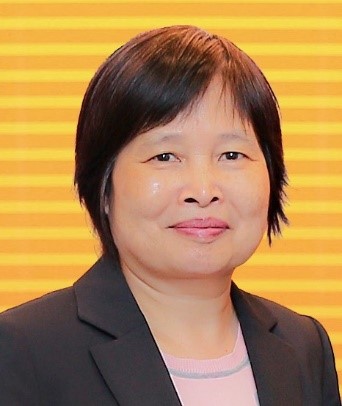 |
演 講 者:Prof. Li Fung Chang (張麗鳳) Chief Architect (2015-present) of the 5G program Office in Taiwan 演講主題:5G for Enterprise Vertical Applications 演講時間:2020年1月16日 11:05~11:35(7F義大演講廳) |
Abstract
In this talk, a presentation on the following topics will be included:
• An overview of world-wide 5G activities including standardization, trials, spectrum policy
• Discussions on readiness of 5G ecosystem for the 5G service that has been launched in 2019, namely eMBB
• An end-end network solution for vertical applications targeted for private network
• Briefing of on-going/planned field trials/testbeds in Taiwan
• Challenges and future directions
Biography
Dr. Li Fung Chang is the Chief Architect (2015-present) of the 5G program Office in Taiwan. In this role, she is responsible for setting up strategy direction for the MoEA funded 5G project as well as providing technical consultation and guidance to the engineering teams working under this project. Prior to this position, she was a Senior Director of Engineering at Broadcom Corp, - Mobile and Wireless Group and led Broadcom system team to support multi-mode 2G/3G/4G cellular SOC modem design/implementation across multi-sites. She is a veteran from AT&T research Labs and Telcordia.
Dr. Chang holds over 85 US patents and many international patents in the area of wireless communications. She is a Chair Professor with NCTU (National Chiao Tung University, HsinChu, Taiwan), fellow of the IEEE (2001), senior advisor at III, ITRI, Taiwan.
暫無資料
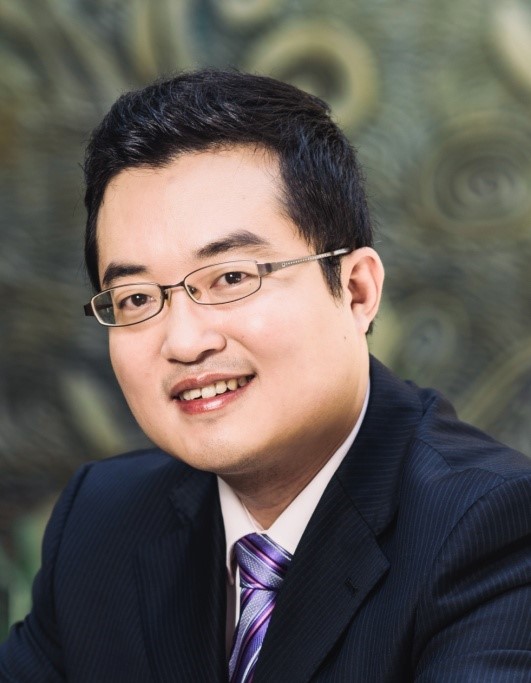 |
演 講 者:Professor Rui Zhang (IEEE Fellow) Department of Electrical and Computer Engineering, National University of Singapore 演講主題:Accessing From the Sky: UAV Communications for 5G and Beyond 演講時間:2020年1月16日 09:00~10:00(7F義大演講廳) |
Abstract
The integration of the dramatically increasing volume of unmanned aerial vehicles (UAVs) or drones into the future 5G and beyond wireless networks calls for a paradigm shift on the design of traditional cellular systems for terrestrial-only communications. In particular, how to realize cellular-connected UAV communications and UAV-assisted terrestrial communications are both practically appealing as well as challenging, due to the high altitude and high mobility of UAVs, the unique channel characteristics of UAV-ground links, the stringent constraints imposed by the size, weight and power (SWAP) limitations of UAVs, as well as the new degree of freedom by exploiting UAV placement/trajectory and communication co-design. Substantial research efforts from both academia and industry have been devoted to advancing this exciting new field, with remarkable progress made in the past couple of years. In this talk, we will provide a comprehensive overview of the state-of-the-art results on UAV-cellular integration, with a particular emphasis placed on the latest research findings on aerial-ground interference management and trajectory optimization in UAV communications. Open challenges and promising directions for future research will be highlighted.
Biography
Dr. Rui Zhang (IEEE Fellow) received the Ph.D. degree from Stanford University in electrical engineering in 2007. He is now a Dean’s Chair Associate Professor in the Department of Electrical and Computer Engineering, National University of Singapore. His current research interests include wireless information and power transfer, UAV communications, and reconfigurable MIMO. He has published over 350 papers, which have been cited more than 30,000 times. He has been listed as a Highly Cited Researcher by Thomson Reuters/Clarivate Analytics since 2015, and was recognized in both the scientific fields of Computer Science and Engineering in 2018. His works have received several IEEE awards, including the IEEE Marconi Prize Paper Award in Wireless Communications, the IEEE Communications Society Heinrich Hertz Prize Paper Award, the IEEE Signal Processing Society Best Paper Award, Young Author Best Paper Award and Donald G. Fink Overview Paper Award. He has served as an Editor for several IEEE journals, including TWC, TCOM, JSAC, TSP, TGCN, etc., and as TPC co-chair or organizing committee member for over 30 international conferences. He is an IEEE Distinguished Lecturer of IEEE Communications Society and IEEE Signal Processing Society.
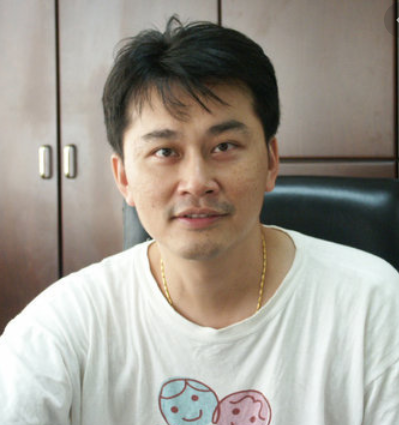 |
演 講 者:Guu-Chang Yang (IEEE Fellow) National Chung Hsing University, Taichung, Taiwan 演講主題:Channel Hopping Mechanisms in Cognitive Radio Networks via Relay 演講時間:2020年1月16日 10:30~11:05 (7F義大演講廳) |
Abstract
The demand of spectral resources will grow tremendously in order to support the huge number of mobile devices in 5G wireless systems. Cognitive radio (CR) becomes an attractive technology to alleviate the spectrum scarcity and efficiency problems. Channel hopping (CH) is a representative technique in the rendezvous processes that can enhance spectral efficiency and is robust against interference in cognitive radio networks. In this talk, the fundamentals of CH sequence designs in CR ad hoc networks are overviewed, including basic definitions, operating modes, and design criteria and metrics. The desirable characteristics of CH sequences that support low media-access latency, large cardinality, and media-access fairness for cognitive radio ad hoc networks (CRAHNs) are outlined. Due to the limitation of transmission range of the two devices in CRAHNs, there is the need for intermediate node(s) to relay if the distance between them are too far away to rendezvous to each other directly. Some technical issues in such a cognitive radio networks via relay are discussed.
Biography
Guu-Chang Yang (S’88–M’92–SM’05–F’12) received the B.S. degree from the National Taiwan University, Taipei, Taiwan, in 1985, and the M.S. and Ph.D. degrees from the University of Maryland, College Park, MD, in 1989 and 1992, respectively, all in electrical engineering.
From 1988 to 1992, he was a Research Assistant in the System Research Center, University of Maryland. In 1992, he joined the faculty of the National Chung Hsing University, Taichung, Taiwan, where he is currently the Founding Dean of the College of Electrical Engineering and Computer Science and a Chair Professor with the Department of Electrical Engineering and the Graduate Institute of Communication Engineering. He co-authored the first-of-its-kind technical book on optical coding theory and its applications to code-division multiple access (CDMA), Prime Codes with Applications to CDMA Optical and Wireless Networks (Norwood, MA: Artech House), in 2002. In 2013, he coauthored a classical reference book, Optical Coding Theory with Prime (NY: CRC Press). His research interests include wireless and optical communication systems, modulation and signal processing techniques, and applications of CDMA.
Dr. Yang received the Distinguished Research Award from the National Science Council in 2004 and 2014, and the Outstanding Young Electrical Engineer Award and the Distinguished Electrical Engineering Professor Award from the Chinese Institute of Electrical Engineering in 2003 and 2012, respectively. He also received the Best Teaching Award from the Department of Electrical Engineering, National Chung Hsing University from 2001 to 2004 and in 2008. He served as the Chairman of the IEEE Communications Society (Taipei Chapter) from 2013 to 2014, the Vice Chairman of the IEEE Communications Society (Taipei Chapter) from 2011 to 2012, the Chairman of the IEEE Information Theory Society (Taipei Chapter) from 2003 to 2005, and the Vice Chairman of the IEEE Information Theory Society (Taipei Chapter) from 1999 to 2000. He also served as the Area Coordinator of the Ministry of Science and Technology’s Telecommunications Program in 2014, the Area Coordinator of the National Science Council’s Telecommunications Program from 2012 to 2013, the Co-Coordinator of the National Science Council’s National Networked Communication Program from 2010 to 2014, and the Co-Coordinator of the Ministry of Science and Technology’s Development and Applications of Advanced Communications Networking Technologies Program from 2014 to 2018. He became an IEEE Fellow in 2012 for contributions to optical CDMA. He is currently an Associate Editor of the IEEE TRANSACTIONS ON COMMUNICATIONS and serves as the Coordinator of the Ministry of Education’s A Talent Cultivation Program for 5G Mobile Broadband Technology from 2018 to 2021.
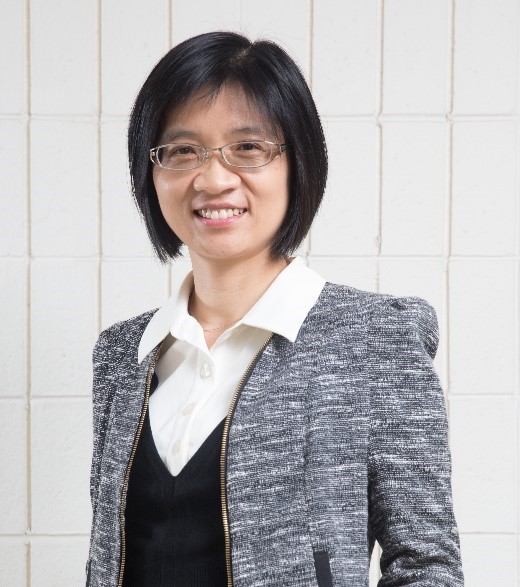 |
演 講 者:Wanjiun Liao (IEEE Fellow) Distinguished Professor, Department of Electrical Engineering, National Taiwan University 演講主題:VR Streaming for 5G and Beyond 演講時間:2020年1月16日 13:30~14:10(7F義大演講廳) |
Abstract
Due to the ability of bringing immersive experiences promised to users, Virtuality Reality (VR) has generated great interests to enable a new way of working, communication and entertainment. Ideally, VR applications should be provided through wireless mobile head-mounted displays (HMDs), so as to be usable anytime and anywhere with low cost. However in practice, HMDs have very limited computational capacity and battery lifetime to ensure high frame rates and low motion-to-photon latency when rendering high-resolution VR frames locally. Meanwhile, the current wireless technologies do not promise to give VR videos with ultra high bitrates and very low delay when the frames are rendered at the servers and projected to the HMDs via wireless links. As a result, their VR performance is much lower than that of their counterparts being tethered to high-performance servers. A major challenge is how to efficiently transmit these computational-intensive VR videos to bandwidth-constrained wireless VR HMDs at acceptable quality levels given their high bitrate and low latency requirements. With the emerging 5G networks, the new radio access and mobile edge computing (MEC) promise to boost transmission rates and greatly reduce network latency by deploying applications at the network edge closer to users, which provides an opportunity for performance improvement of cloud VR applications. In this talk, some recent advances in wireless VR streaming will be overviewed. The challenges and opportunities of edge computing, caching, and communications for wireless VR will be addressed. Some epxeriences we learn from the on-going project on VR healthcare for 5G and Beyond sponsored by the MOST B5G/6G program will be shared.
Biography
Professor Wanjiun Liao is a Distinguished Professor of National Taiwan University (NTU), Taipei, Taiwan, the Director of Internet of Things Research Center of NTU, and an Adjacent Research Fellow of Research Center for Information Technology Innovation, American Sinica in Taiwan. She was the Y. Z. Hsu Scientific Chair Professor, the Himax Chair Professor, the Department Chair of Electrical Engineering of NTU, the Vice President for Academic Affairs (Provost) of NTU, and the Director General of Department of Engineering and Technologies, Ministry of Science and Technology (MOST), Taiwan. Professor Liao has been very active in IEEE and ComSoc, serving as Associate Editor of IEEE Transactions on Wireless Communications and IEEE Transactions on Multimedia, Steering Committee of IEEE Transactions on Mobile Computing, IEEE ComSoc Distinguished Lecturer, IEEE Sumner Award Committee, IEEE Fellow Committee, IEEE ComSoc Fellow Evaluation Standing Committee, IEEE ComSoc Director for Asia Pacific, and IEEE ComSoc Board-of Governors (BoG) Members-at-Large. She received many awards and recognitions from different organizations, including Academic Award by Ministry of Education, Outstanding Research Awards by National Science Council, Taiwan, and several IEEE best paper awards. She is a Fellow of the IEEE.
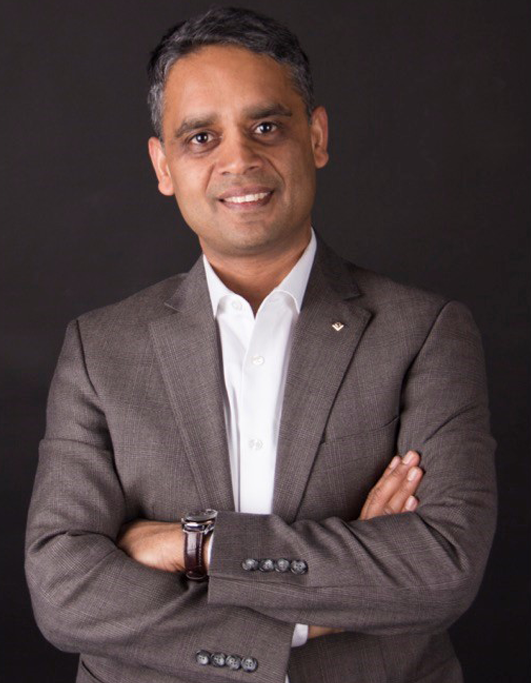 |
演 講 者:Professor Ekram Hossain (IEEE Fellow) Department of Electrical and Computer Engineering, University of Manitoba, Canada 演講主題:Radio Resource Allocation in the Beyond 5G Era: Promises of Deep Learning and Deep Reinforcement Learning 演講時間:2020年1月17日 09:00~10:00 (義大7F演講廳) |
Abstract
Optimal resource allocation is a fundamental challenge for dense and heterogeneous wireless networks with massive wireless connections. Because of the non-convex nature of the optimization problems, often it is computationally demanding to obtain the optimal resource allocation. Machine learning, especially Deep learning (DL), is a powerful tool where a multi-layer neural network can be trained to model a resource management algorithm using network data. Therefore, resource allocation decisions can be obtained without intensive online computations which would be required otherwise for the solution of resource allocation problems. Recently, deep reinforcement learning (DRL) has emerged as a promising technique in solving non-convex optimization problems. Unlike deep learning (DL), DRL does not require any optimal/near-optimal training dataset which is either unavailable or computationally expensive in generating synthetic data. In this talk, I shall present a novel centralized DRL-based downlink power allocation scheme for a multi-cell system intending to maximize the total network throughput. Specifically, I shall discuss a deep Q-learning (DQL) approach to achieve near-optimal power allocation policy. I shall present some simulation results to compare the proposed DRL-based power allocation scheme with the conventional schemes in a multi-cell scenario.
Biography
Ekram Hossain (F’15) is a Professor in the Department of Electrical and Computer Engineering at University of Manitoba, Canada. He is a Member (Class of 2016) of the College of the Royal Society of Canada. Also, he is a Fellow of the Canadian Academy of Engineering. Dr. Hossain's current research interests include design, analysis, and optimization beyond 5G/6G cellular wireless networks. He was elevated to an IEEE Fellow “for contributions to spectrum management and resource allocation in cognitive and cellular radio networks". His research works have received 26,000+ citations (in Google Scholar, with h-index = 84). He received the 2017 IEEE ComSoc TCGCC (Technical Committee on Green Communications & Computing) Distinguished Technical Achievement Recognition Award “for outstanding technical leadership and achievement in green wireless communications and networking”. Dr. Hossain has won several research awards including the “2017 IEEE Communications Society Best Survey Paper Award” and the “2011 IEEE Communications Society Fred Ellersick Prize Paper Award”. He was listed as a Clarivate Analytics Highly Cited Researcher in Computer Science in 2017 and 2018. Currently he serves as the Editor-in-Chief of IEEE Press and an Editor for the IEEE Transactions on Mobile Computing. Previously, he served as the Editor-in-Chief for the IEEE Communications Surveys and Tutorials (2012-2016). He is a Distinguished Lecturer of the IEEE Communications Society and the IEEE Vehicular Technology Society. Also, he is an elected member of the Board of Governors of the IEEE Communications Society for the term 2018-2020.
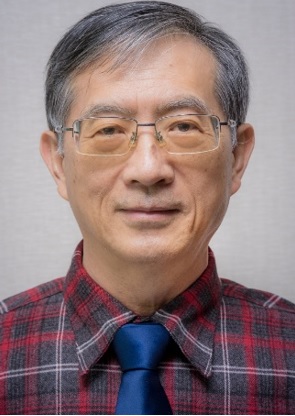 |
演 講 者:Ching-Kuang C. Tzuang (莊晴光, IEEE Fellow) Professor Emeritus, Graduate Institute of Communication Engineering, Department of Electrical Engineering, National Taiwan University 演講主題:Engineering in Post-Moore Electronic Communication: a revelation of ≥5G base station at mmWave 演講時間:2020年1月15日 13:40~14:30(6F演講廳) |
Abstract
The presentation briefly discusses the world-leading role of TSMC’s foundry service and its impact on the electronic communication. What roles of microwave and antenna engineering may play in the forthcoming 5G and future communication systems? Are these roles important or just sidelines? How the combination of microwave engineering and antenna engineering, called electromagnetic engineering, may shape the landscape of the on-going and future electronic communication module or system using hundreds and thousands of microchips made by semiconductor foundries? This talk applies an example of designing a new mmWave (millimeter-wave) 5G base station to illustrate viable pathways to green communication. The base station employs beamspace Massive MIMO dictated by the proposed quasi-optical lens with transceiver MMICs distributed on the focal plane in close proximity within the point spread of the lens, followed by a switching matrix module arbitrarily connecting p baseband units and n sets of transceivers. Ray-tracing diagrams explain the retro-directive channel propagation characteristics of the proposed quasi-optical beamforming MIMO, demonstrating the returned signals from a remote terminal under interrogation will reach to the nearby receivers in the focal plane, and pointing to a promising solution to green communication at more than one order of magnitude improvement in energy consumption for a particular case study. The presentation concludes that the electromagnetic engineering may transform the outlook of the RF microchips in the upcoming electronic communication systems.
Biography
Ching-Kuang Clive Tzuang (S’84-M’86-SM’92-F’99) received the Ph.D. degree in electrical engineering from the University of Texas at Austin (1986). He was a member of technical staff at TRW, Redondo Beach, CA, working on high-speed, high-precision, mixed, analog and digital GaAs MESFET and silicon bipolar integrated circuits beyond giga-bit/second (1981-1984). He studied the propagation of complex waves, leaky modes in integrated circuits since 1984. He was an associate professor (1986), full professor (1991) at the Institute of Communication Engineering, National Chiao Tung University. He helped Taiwan participating in international collaborations on radio astronomy, supervised the installation and operation of Resource Satellite Receiving Station at National Central University (1992~1995), originated and executed a futuristic, national academic excellence program of millimeter-wave communication system in package (SiP) (2000~2008). He became an IEEE Fellow in 1999, and joined the Graduate Institute of Communication Engineering, National Taiwan University (2004), exploring guided-wave structures for scalable RF system-on-chip (SoC) technology development from microwave to THz, participating in the IEEE 802.15 TG3c 60-GHz wireless personal area network (WPAN) standardization in collaboration with CoMPA, Yokosuka, Japan (2004~2006). He was appointed as the editor-in-chief (EiC) of the IEEE MICROWAVE AND WIRELESS COMPONENTS LETTERS (2010-2012). He retired and became a professor emeritus of National Taiwan University (2012), accepted the invitation from Tianjin University, and built a precision THz RF component and antenna characterization laboratory up to 1000 GHz (2012-2015). Then he lectured millimeter-wave and THz science and technology in various institutions in China (2015-2016) and returned to Taiwan in late 2016. His research group received the Japan IEICE ELEX Best Paper Award in the year of 2017. He was the recipient of the 2018 IEEE MTT-S Distinguished Educator Award. Recently he devoted much of his time to exploration of microwave/THz theory and techniques for advancing security, safety, and medical applications.
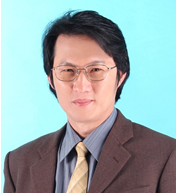 |
演 講 者:林健維 NSI-MI Technologies/WaveFidelity Inc. 演講主題:The Methodology and the Applications to AESA/Digital Beamforming Antenna Verification and 5G Mobile Basestation Antenna Performance Diagnosis 演講時間:2020年1月15日 14:30~15:00 (6F演講廳) |
Abstract
The Methodology and the Applications to AESA/Digital Beamforming Antenna Verification and 5G Mobile Basestation Antenna Performance Diagnosis will be presented.
Biography
Ike (Jiahn Wei) Lin, received B.S. and M.S. degrees of Physic in 1983 and 1985, respectively from National Central University, Taiwan.
Had served as a research specialist in various phased array antenna development and qualification programs by applying near-field antenna measurement metrology at Chung-Shan Institute of Science and Technology (CSIST), during 1985 to 2002. Was with WavePro Inc. since January 1st, 2003 till June 30, 2015, having focused on implementing automated far-field/near-field antenna measurement facilities using NSI based near-field measurement technology & solutions and been actively supporting academic institutes and wireless industry manufacturers building up knowledge and appropriate measurement range solutions for the antenna performance characterization of wireless and microwave antenna devices in Taiwan.
Co-fonder of WaveFidelity Inc. in 2017, currently also supports NSI-MI Technologies, as Applications Specialist on global demands of projects promotion, implementation, validation, and training requirements. Only recently completed the validation program of the largest horizontal planar nearfield system in Taiwan for NCSIST, including 50GHz mmWave measurement feature upgrade and digital beamforming antenna/AESA calibration/optimization feature implementation. Have also completed high accuracy W-band Planar nearfield measurement system at UMT Taiwan.
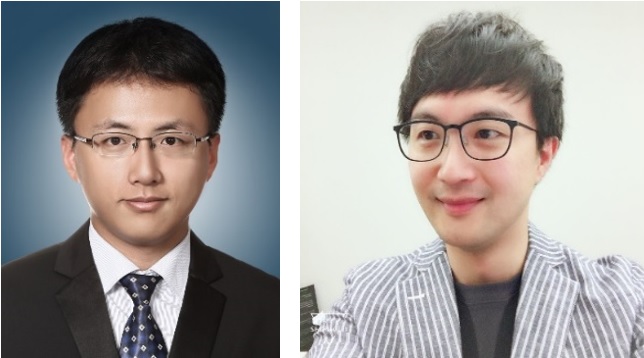 |
演 講 者:李曉錦經理 / 林決仁副總經理 National Instruments國家儀器股份有限公司 / TMYTEK錂研科技股份有限公司 演講主題:Evolving 5G and Challenges Ahead – 5G 2.0 演講時間:2020年1月15日 15:00~15:30(6F演講廳) |
Abstract
依託 "領先用戶計畫",NI同全球院校及企業一起,基於平台化的解決方案,實現5G從設計、原型驗證到測試。從5G網路技術角度,基於NI向量訊號收發儀及USRP RIO平台,可以實現Massive MIMO、mmWave等技術原型搭建。從5G研究角度,可快速部署演算法,加速通道類比、波束成形等的驗證。從5G測試角度,NI毫米波收發系統,説明開發5G系統樣機和通道測量。NI與全球領先院校及企業保持著深度合作,如三星、Nokia、思博倫、布裡斯托大學、北京郵電大學等。
Biography
李曉錦,2014年就職於國家儀器(NI),負責NI大中華區院校教學與科研市場,曾主導過多所校企戰略合作,在課程開發、專業建設、學生創新等方面具有豐富的經驗。
林決仁,2008年進入HTC宏達電子擔任軟體架構主任工程師,帶領團隊與微軟,高通等公司就軟體架構深度合作:微軟Windows Mobile記憶體架構優化,啟用ANT +晶片於部分HTC機種。2011年創辦星竑科技擔任執行長,提供工業用物聯網解決方案。2017年年正式加入棱研科技擔任副總經理,致力於將軟體能量結合毫米波專業以期在5G戰場開創性新局。
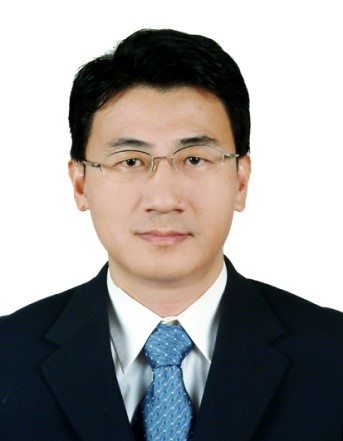 |
演 講 者:Prof. Ching-Wen Tang (湯敬文教授) Department of Communications Engineering, National Chung Cheng University 演講主題:如何利用微帶線實現寬頻且高衰減率之帶拒濾波器 演講時間:2020年1月15日 16:10~17:00 (6F演講廳) |
Abstract
在應用日趨重要的數位無線與多媒體無線通訊系統中,新的寬頻無線通訊系統架構皆運用寬頻道特性以增進通訊系統的傳輸速率與降低通訊功率。此項運用固然可以大幅提昇通訊系統的整體效能,然而對射頻電路設計反到形成新的挑戰與考驗。帶拒濾波器的設計必須濾除指定頻帶的雜訊信號,如寄生信號和諧波,因此在設計帶拒濾波器時需要具有寬且深和陡直的截止頻率響應特性。如何達到寬且深的截止頻帶和陡直的截止頻率?相關技術的研究與發展值得一同探討。
Biography
湯教授於民國91年取得國立交通大學電信工程博士學位,目前擔任國立中正大學通訊系教授。主要研究領域為微波被動電路設計,於相關研究領域發表國際學術期刊、會議論文超過150篇,並曾擔任國際期刊 IEEE Transactions on Microwave Theory and Techniques的副編輯。
湯教授曾獲民國92年徐有庠先生紀念基金會「有庠科技論文獎」、民國93年工業技術研究院「優質專利獎」、民國96年中國電機工程學會高雄市分會「優秀電機工程師獎」、民國98年國立中正大學「青年學者獎」、民國99年IEEE Tainan Section「Best GOLD Member Award 」、民國100-103年國科會「優秀青年學者計畫」、民國100年中國電機工程學會高雄市分會「傑出電機工程師獎」、民國105年國立中正大學「傑出研究獎」、民國106年中國電機工程學會「傑出電機工程教授獎」、民國108年IEEE Tainan Section「Outstanding Technical Achievement Award 」。
暫無資料
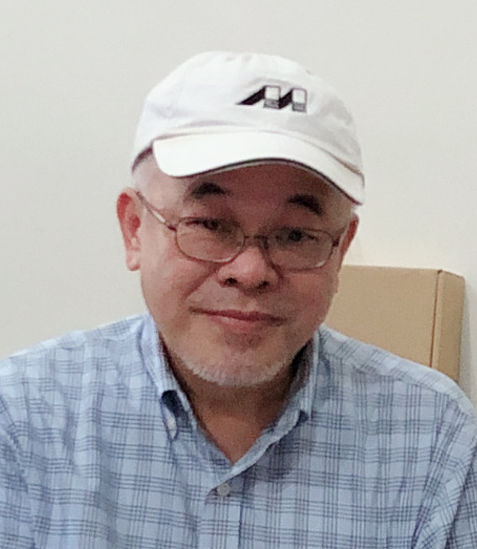 |
演 講 者:Lih-Tyng Hwang (黃立廷, IEEE Life Fellow) Institute of Communications Engineering, National Sun Yat-sen University, Kaohsiung, Taiwan 演講主題:Packaging Solutions and Hardware Technology for 5G Mobile Systems 演講時間:2020年1月16日 13:30~14:20 (6F演講廳) |
Abstract
Convergence of Communications for Wide Area Networks (WANs), from 2G to 4G LTE, is first reviewed. We identify and illustrate the packaging solutions in realizing state-of-the-art WAN devices. Underlying packaging solutions employed to satisfy massive mobile product demands (required by products such as handsets and portable devices) are shown. A simple MTM (More Than Moore) packaging map is drawn to further highlight the trends in packaging WAN products on the horizon. Secondly, we review the key characteristics for 5G mobility. We then identify the key hardware technologies that are needed to fulfill the promises of 5G mobility; which include Array antenna technologies in system design and Stacking & Planar technologies in manufacturing.
Biography
Professor Lih-Tyng Hwang obtained PhD from University of Pennsylvania; he joined MCNC, RTP (Research Triangle Park), NC in 1985. Later, he worked for Motorola at Tempe, AZ and Schaumburg, IL, Semiconductor Products Sector and Motorola Labs, respectively. In 2009, he became a professor at NSYSU, Kaohsiung, Taiwan. He is one of the authors of the book, “3D IC and RF SiPs, advanced stacking and planar solutions for 5G mobility,” published in May of 2018. He is an IEEE Life Fellow.





